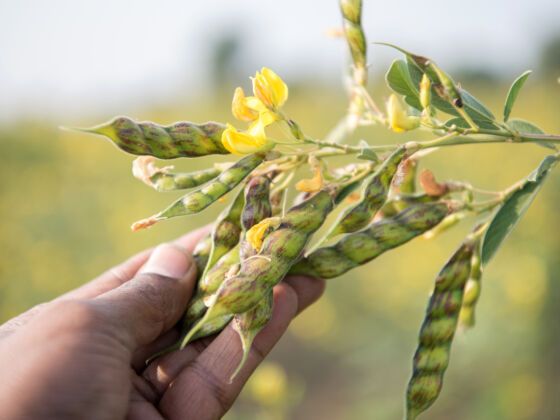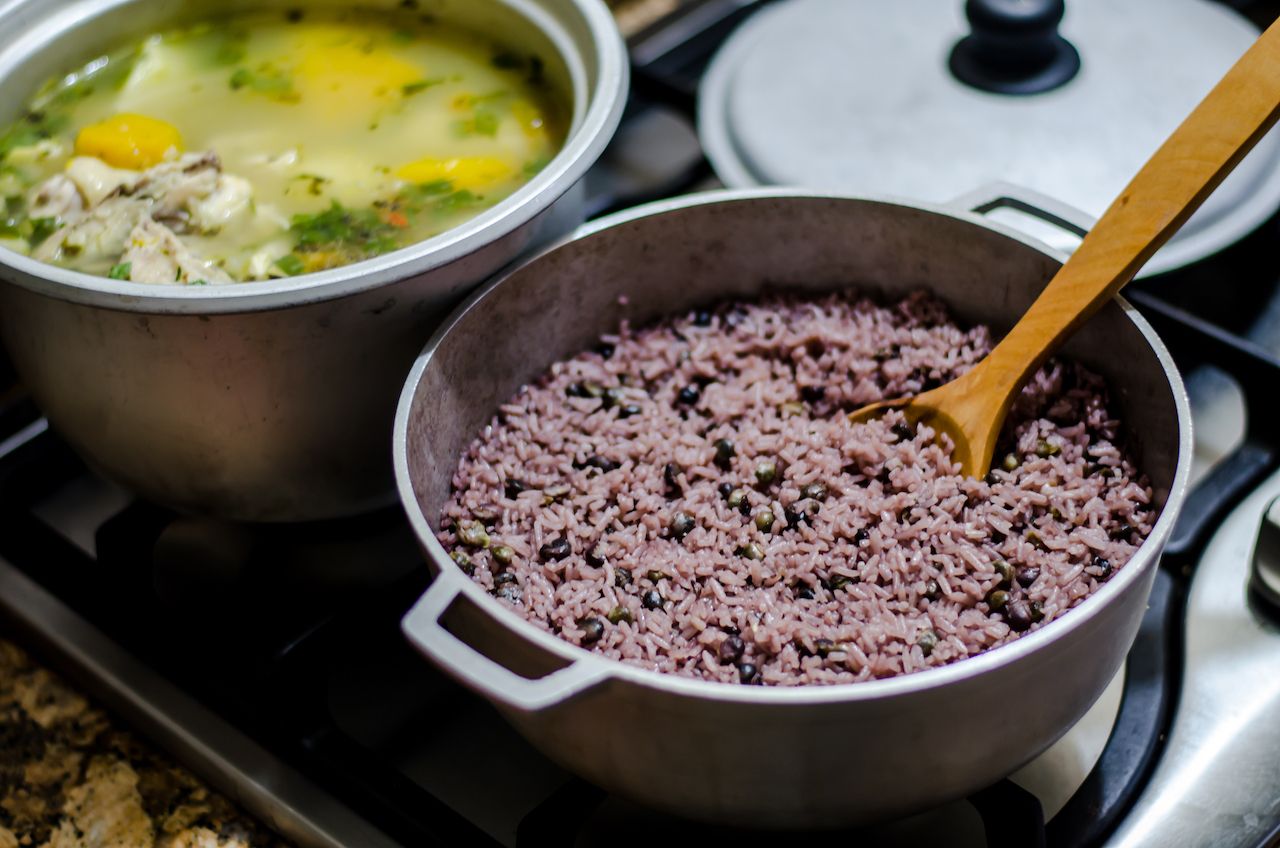The story of the humble pigeon pea begins 3,500 years ago in India, where it was first domesticated as an agricultural crop. But this legume is an intrepid traveler, voyaging across oceans to be planted and cultivated all over Africa and the Caribbean. But how did this unassuming bean end up becoming so widespread? The answer in part lies in the long history of the slave trade, indentured servitude, and railway expansion.


How the Pigeon Pea Became Such a Kitchen Staple Around the World
Thanks to its status as a shape shifting cultural staple that plays a part in cuisines all over the world, pigeon peas are now known by many names. It got the name its most widely known by today in Barbados, where it was used as pigeon feed. In India, you might hear it called toor, tur, arhar, or red gram, whereas in Africa they’re known as Congo peas, and in Jamaica, gungo peas.
There is much speculation about how pigeon peas embarked on a journey back and forth across the Atlantic. The most likely explanation is that the slave trade facilitated the plant’s movement from region to region. European ships that transported enslaved people helped hasten the bean’s spread from the 17th to the 19th centuries. According to In the Shadow of Slavery: Africa’s Botanical Legacy in the Atlantic World, slave traders packed ships with traditonal foods like black eyed peas, yams, groundnuts, and, of course, pigeon peas, because of the “view that more Africans survived slave voyages if they were fed the food to which they were accustomed.”
The book’s author, Judith Camey, writes that around 40 percent of these voyagers were bound for the Caribbean, where the enslaved people disembarked and set about creating a new agricultural system. Pigeon peas were an essential source of protein, along with other crops like yams and plantains.
“African slaves built their survival in part of their African heritage,” writes Camey, “[and] African plants accompanied one of the most significant populations movements in human history.” Camey goes on to write that the crops that migrated to the Caribbean and beyond with enslaved peoples played a “critical role in African foodways, as provisions carried on slave ships to the New World.”
Later, another mass migration of peoples transported pigeon peas from one continent to another: An article in the scientific journal Plant Breeding indicates that although there is evidence that pigeon peas have been growing wild in Africa at least as long as they’ve been growing in India, additional species of legume were “introduced by [Indian] immigrants in the 19th century who moved to Africa to become railway workers and storekeepers. From eastern Africa, pigeon peas spread over the African continent.” A total of 3 million people of Indian descent migrated to Southeast Africa during this period — many as indentured laborers to expand the region’s railway system.
Today, India still grows the majority of the world’s pigeon peas — around 70 percent of the global production, according to a 2019 report — but the legume’s healthy nutrients and versatile nature make it a popular staple in many different countries.

Photo: Mabelin Santos/Shutterstock
All over the Caribbean, especially in Jamaica, the most popular way to serve pigeon peas is either stewed in tomatoes and onions, or as a simple dish of pigeon peas mixed with rice cooked in coconut milk that’s heated up with scotch bonnet peppers. In Puerto Rico, arroz con gandules is an iconic dish, often served around Christmas or other special occasions to feed the entire family. Prepared in a caldero, a cooking pot similar to a Dutch oven, arroz con gandules is seasoned with sofrito and tomato sauce and mixed with chunks of pork.
In India, pigeon peas are a common ingredient in dal (or dhal), which is a spiced split pea stew. Dal made with pigeon peas is known as toor dal. Dal is often seasoned with some combination of cumin, coriander seeds, turmeric, and ginger, and it’s sometimes compared to split pea soup. Matar chaat, an iconic street food snack sold in Delhi, is prepared by cooking pigeon peas in a spicy gravy seasoned with chili powder and cumin and then tossed with chopped onions and tomatoes.
You’ll find pigeon peas in many different African dishes, but popular ways to prepare it include bharazi: pigeon peas stewed in coconut milk and spiced with chilis and served at breakfast. Mbaazi za nazi, a specialty of Kenya, is prepared by simmering pigeon peas in coconut milk, then serving the dish with chapati or over rice. Camey writes that in Africa, the pigeon pea has remained an agricultural staple for non-dietary reasons as well: As a legume, it restores fertility to the soil by absorbing nitrogen from the bacteria in the earth, providing carbohydrates in return, and its shell can be recycled as animal feed.
Pigeon peas might seem like a simple legume, paired with straightforward curries and effortless rice dishes that can feed big families, but their complex history embodies how the mass movements of peoples across continents — often facilitated by industrialization and enslavement — is tied to the interconnected relationship between seemingly disparate cultures and cuisines. When seeds and plants accompany people on these long journeys, they transform and adapt according to new climates, ingredients, and cooking techniques. The impact of European colonization and slave trade was, and remains, devastating, but the enslaved people (and later, indentured laborers) who persevered in new lands developed entirely new food systems which allowed the pigeon pea to become a staple. It’s thanks to their ingenuity that the pigeon pea has the legacy — and culinary fame — that it enjoys today.